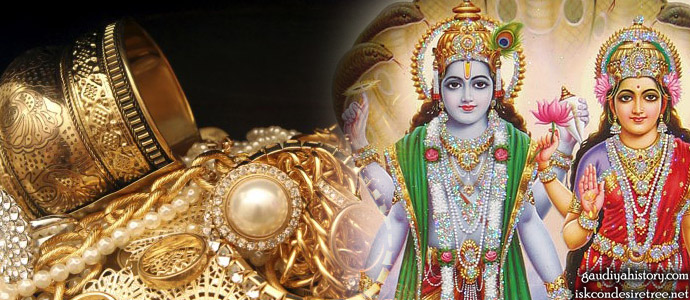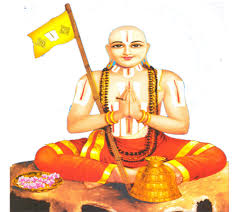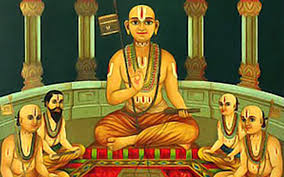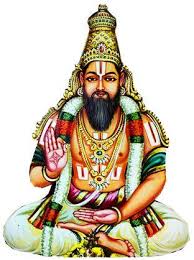Introduction:
Kalidvamsa, also known as Nila, was one of the revered Alvars, a group of South Indian poet-saints devoted to Lord Vishnu. His story is particularly significant because it highlights his transformation from a fallen state to becoming a devout devotee of the Lord. The name “Kalidvamsa” means “destroyer of the influence of Kali,” a title he earned after his devotion to the Lord became apparent. Before his transformation, he was known as Nila, a name reflecting his dark complexion. Nila belonged to the Dravidian race, known for their extremely dark skin, and was considered a fifth-class mleccha, or outcast.
Nila’s Background:
Nila was exceptionally tall, muscular, and well-versed in various forms of combat, including sword fighting, spear throwing, wrestling, and boxing. His physical prowess made him a formidable figure, and he gathered around him a gang of equally dangerous individuals. During the early days of Kali-yuga, mystical powers were more prevalent, and each member of his gang possessed unique abilities that made them even more fearsome. One of his companions could hide in his own shadow, another could quickly pick any lock or dismantle any defensive mechanism, and the third had the ability to kill silently. Together, they formed a crew that instilled fear in the hearts of many.
Nila’s Employment as a Tax Collector:
The king of the region, recognizing the danger posed by Nila and his gang, decided that the best way to manage him was to employ him. Nila was appointed as the tax collector for the district, a role he took on with enthusiasm. No one dared to withhold taxes when Nila and his men arrived to collect them.
Encounter with the Heavenly Damsel:
Near the village where Nila resided, there was a beautiful bathing pond, so special that heavenly damsels would occasionally come down to bathe there. One day, a young damsel from the heavenly planets was left behind by her companions due to amnesia. A village doctor found her and, recognizing her extraordinary beauty, took her home. His wife was equally taken by the girl, and they decided to raise her as their daughter, naming her Kemuda, which means “lotus.” Because she was an unmarried girl, she stayed indoors, only occasionally going up to the roof for fresh air.
Nila’s Proposal:
One day, as Nila was passing by the house, he noticed Kemuda on the roof and was immediately smitten by her beauty. He knocked on the doctor’s door and expressed his desire to marry her. The doctor, however, explained that Kemuda was not his biological daughter and suggested that Nila ask her directly. Kemuda agreed to speak with Nila and, after listening to his boasts about his strength and abilities, she told him that if he wanted to marry her, he would first have to become a Vaishnava (devotee of Vishnu).
Nila’s Transformation Begins:
Though Nila had no idea what it meant to be a Vaishnava, he agreed to her condition and hurried to the local temple. There, he approached the head priest and declared his desire to become a Vaishnava. The priest explained the commitments and responsibilities involved, and Nila, eager to win Kemuda’s hand, agreed to everything. The priest then garlanded Nila with a garland from the Deity, marking his official initiation as a Vaishnava.
The Test of Devotion:
However, when Nila returned to Kemuda, she told him that wearing a garland was not enough. To prove his devotion, he would have to feed 1,000 Vaishnavas every day for a year, wash their feet, and drink the water used to wash their feet. Nila agreed and enlisted his gang to help him with this task. His men, accustomed to following his commands, began rounding up Vaishnavas from the streets, bringing them to Nila’s place for grand feasts. Initially, the Vaishnavas were nervous, but over time, Nila’s genuine devotion began to show, and he started enjoying the service.
Nila’s Growing Devotion:
Nila became increasingly dedicated to his service, feeding the Vaishnavas daily and performing the rituals with sincerity. His heart softened, and he developed true devotion. Even when his funds ran out, he continued to feed the Vaishnavas using the tax money he had collected for the king. This eventually led to a confrontation with the king, who sent his army to arrest Nila. However, Nila defeated the king’s forces in battle, proving his strength and devotion. When the Brahmins of the kingdom rebuked him for misusing the king’s funds, Nila surrendered to them and accepted his punishment, willingly going to jail.
Divine Intervention and Further Trials:
In prison, Nila prayed fervently to Lord Vishnu, expressing his desire to continue serving the Vaishnavas. Lord Vishnu appeared to him and instructed him to ask the king to send him to Kanchipuram, where he would find a treasure that would allow him to repay the king and continue his service. Nila followed the Lord’s instructions, and with the treasure he found, he repaid the king and resumed his service.
Nila’s Encounter with Lakshmi and Narayana:
Nila’s devotion grew stronger, and one day, while planning another raid, he encountered a wealthy merchant and his wife. After plundering their caravan, Nila realized that the merchant and his wife were none other than Lakshmi and Narayana in disguise. This divine encounter further deepened his devotion.
The Plundering of Buddhist Temples:
As Nila’s wealth ran out again, Lord Vishnu permitted him to plunder the wealthy Buddhist temples, which had become opulent despite their founder’s simple teachings. Nila and his gang successfully looted a large Buddhist monastery, using the wealth to cover the dome of the Ranganatha Temple in Sri Rangam with gold. This act solidified his role as a staunch protector of Vaishnavism.
Nila’s Legacy as Kalidvamsa:
Nila’s dedication and service earned him the title Kalidvamsa, the destroyer of Kali’s influence. He converted everyone in his region to Vaishnavism, ensuring that all followed the path of devotion. During festivals at Sri Rangakshetra, Nila would march in front of the Deity with his sword drawn, ensuring that no offenders disturbed the celebrations. His fierce dedication to Vaishnava-dharma earned him the respect of all, and his life story became a powerful example of transformation through devotion.
The Beginning of the Lakshmi Sampradaya:
Nila’s story also marks the beginning of the Lakshmi Sampradaya, as his interaction with Lord Vishnu and Goddess Lakshmi during a plundering raid laid the foundation for this spiritual lineage. His life teaches us that no matter how fallen one may be, through sincere service to the Lord and His devotees, anyone can attain the highest state of devotion and make a significant impact on the spiritual landscape.
Moral of the Story:
Kalidvamsa’s story demonstrates the transformative power of devotion and service to the Vaishnavas. No matter how fallen or sinful one’s past may be, sincere dedication to serving the Lord and His devotees can purify the heart and lead to a complete transformation. The story also highlights the importance of humility, as Kalidvamsa, despite his immense strength and power, surrendered to the teachings of the Brahmins and the instructions of Lord Vishnu. His life reminds us that true strength lies not in physical prowess, but in unwavering devotion to God.
Prayer:
“O Lord Vishnu, just as You transformed the heart of Kalidvamsa and guided him on the path of devotion, please guide us on our spiritual journey. Help us to serve You and Your devotees with sincerity and humility, and grant us the strength to overcome the influences of Kali-yuga. May we always remember that true power comes from devotion to You.”
Source: https://gaudiyahistory.iskcondesiretree.com/kalidvamsa/



